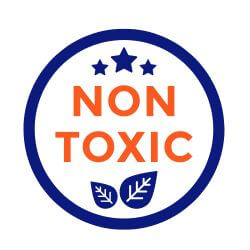Designing a kid's playroom is an incredible opportunity to foster creativity, exploration, and endless fun. Not only is a well-designed playroom a haven for your little ones, but it can also be a space that sparks their imagination and learning. In this guide, we'll delve into how to set up a kid's playroom that is safe, organized, and filled with joy.
Understanding the Essentials of a Playroom
Before diving into the design, it's critical to grasp the essential elements that contribute to an effective kid's playroom. The main objectives include:
- Safety: Ensuring the playroom is a secure environment.
- Organization: Keeping toys and supplies easily accessible yet tidy.
- Functionality: Designing a space that accommodates various activities.
- Flexibility: Customizing the area to grow with your child's needs.
Designing the Layout: Choosing the Right Space

Choosing the right space for your playroom is the first step in setting it up. Here are some tips to help you evaluate and select the perfect area:
Location Matters
Ideally, the playroom should be in a location that is easily accessible for your kids. Consider a room or area that can be supervised easily and is free from too many distractions. Think about whether any space in your home can be converted into a playroom, such as:
- A spare bedroom
- A sectioned-off area of the living room
- Basement or attic space
Assessing Size
The size of the space will impact how you organize the toys and activities. If the area is small, you'll need to get creative with storage solutions. For larger spaces, consider dividing the room into zones for different types of play.
Setting the Mood: Color and Decor Choices
Choosing the right color scheme and decor can significantly affect the ambiance of the playroom. Here are some things to consider:
Color Palette
Bright colors can stimulate creativity and energy, making them ideal for a playroom. However, you might want to balance vibrant colors with calming tones to create a welcoming environment. Some popular color schemes include:
- Pastels: Soft hues create a soothing atmosphere.
- Bold Colors: Bright shades foster excitement and playfulness.
- Earthy Tones: Natural colors can enhance imaginative play.
Incorporating Fun Decor
Adding unique decor items such as wall decals, fun art, or educational posters can make the space feel more inviting. Consider including themes that align with your child's interests, whether it's animals, space, or fantasy. Personal touches can create a sense of belonging for your little ones.
Furniture Choices: Practical and Playful

Furniture plays a crucial role in your playroom's functionality. Here’s how to choose playroom furniture that is both practical and appealing:
Seating Arrangements
Comfortable seating is important! Opt for furniture that is lightweight and easy to rearrange, such as:
- Pillows and floor cushions
- Small bean bags
- Mini armchairs or benches
Storage Solutions
With an abundance of kids toys comes the challenge of keeping everything organized. Consider using:
- Baskets or bins for easy access to toys
- Shelving units for displaying books and games
- Multi-functional furniture, like ottomans with storage
Activity Tables
Your playroom should feature a dedicated space for crafts, games, and educational activities. A sturdy table with chairs will facilitate activities, whether it’s puzzles, art projects, or board games.
Zone Your Space: Organizing for Fun and Function
To make the most out of your kid's playroom, create specific zones for various types of play. This not only keeps the area organized but also encourages children to engage in different activities:
Creative Zone
This area should be dedicated to art and crafting. Stock up on supplies such as:
- Crayons and markers
- Colored papers
- Glue, scissors, and other craft supplies
Reading Nook
Incorporating a reading nook fosters a love for books. Add a few shelves to hold a variety of kids' books, along with comfortable seating and good lighting.
Active Play Zone
This zone should encourage physical activity. Depending on the available space, you could include items like:
- Soft play equipment
- Mini trampolines
- Obstacle courses using soft materials
Quiet Zone
Every playroom should have a quiet area where kids can relax or take a moment to chill out. This can include a tent filled with pillows and gentle lighting to create a cozy atmosphere.
Pay Attention to Safety: Keeping Your Kids Secure
Safety should be a top priority in your kid's playroom. Here are important safety measures you should take:
Use Non-Toxic Materials
Ensure that toys and furniture are made from non-toxic materials, especially since kids tend to explore through touch and sometimes taste. Select paints and finishes that are free from harmful chemicals.
Secure Heavy Items
Anchoring bookshelves and ensuring that all furniture is stable will reduce the risk of tipping, which can be a hazard as your child climbs and plays.
Check Soft Surfaces
If you're using soft play mats or carpets, ensure that all materials are safe, easy to clean, and free of allergens.
Encouraging Imagination and Exploration
A kid's playroom is not just a place for toys; it’s a space that should ignite imagination and inspire creativity. Here are several ways to make it a special place of engagement:
Interactive Play
Incorporate toys that encourage interactive play, such as building blocks, puzzles, and role-playing sets. This not only keeps your children entertained, but promotes cognitive development.
Educational Resources
Integrate educational materials into the playroom. Consider interactive games that teach numbers, letters, and problem-solving skills while ensuring fun remains at the forefront.
Incorporating Kids Toy Variety
To maintain engagement, offer a variety of kids toy types. This can include arts and crafts supplies, books, educational toys, and creative play items. Rotating toys helps keep the environment fresh and exciting.
Making Cleaning Easy: Establishing a Routine
Setting up a playroom is just the beginning. Maintaining organization and cleanliness is key. Here are some strategies that can help you keep the space tidy:
Implement a Cleanup Routine
Teach your kids the importance of cleaning up after themselves. Create a fun ritual for cleaning time to make it enjoyable.
Use Clear Bins
Using transparent storage bins allows children to see their toys easily, helping them find what they are looking for and putting things back where they belong.
Regular Decluttering
Schedule regular times to go through toys and items to declutter. Encourage your children to donate toys they no longer use, promoting sharing and charity.
Let the Fun Last: Keeping the Playroom Fresh
As your child grows, their interests will evolve. Adapt your playroom to keep it relevant and engaging for their developing stages:
Seasonal Updates
Rotate toys based on seasons or holidays. For example, during winter, incorporate winter-themed books and crafts. This keeps the space exciting and fresh.
Encourage Input
As children grow, allow them to contribute ideas for the playroom layout or decor. Their involvement will boost enthusiasm and ownership of their space.
Stay Informed
Keep an eye on emerging trends in children's play and developmental needs. This will help you make informed decisions when updating your playroom.
Creating a Legacy of Fun and Learning
Setting up a kid's playroom is more than just arranging toys; it’s about creating a vibrant environment that fosters growth, creativity, and adventure. The experience provides opportunities for family bonding, learning, and play. As your little ones grow, your careful planning and attention to detail will create treasured memories that last a lifetime.
With the knowledge from this guide, you are now empowered to create a delightful haven tailored to your child's needs. So roll up your sleeves, let your creativity flow, and begin the exciting journey of setting up the perfect kid's playroom!








